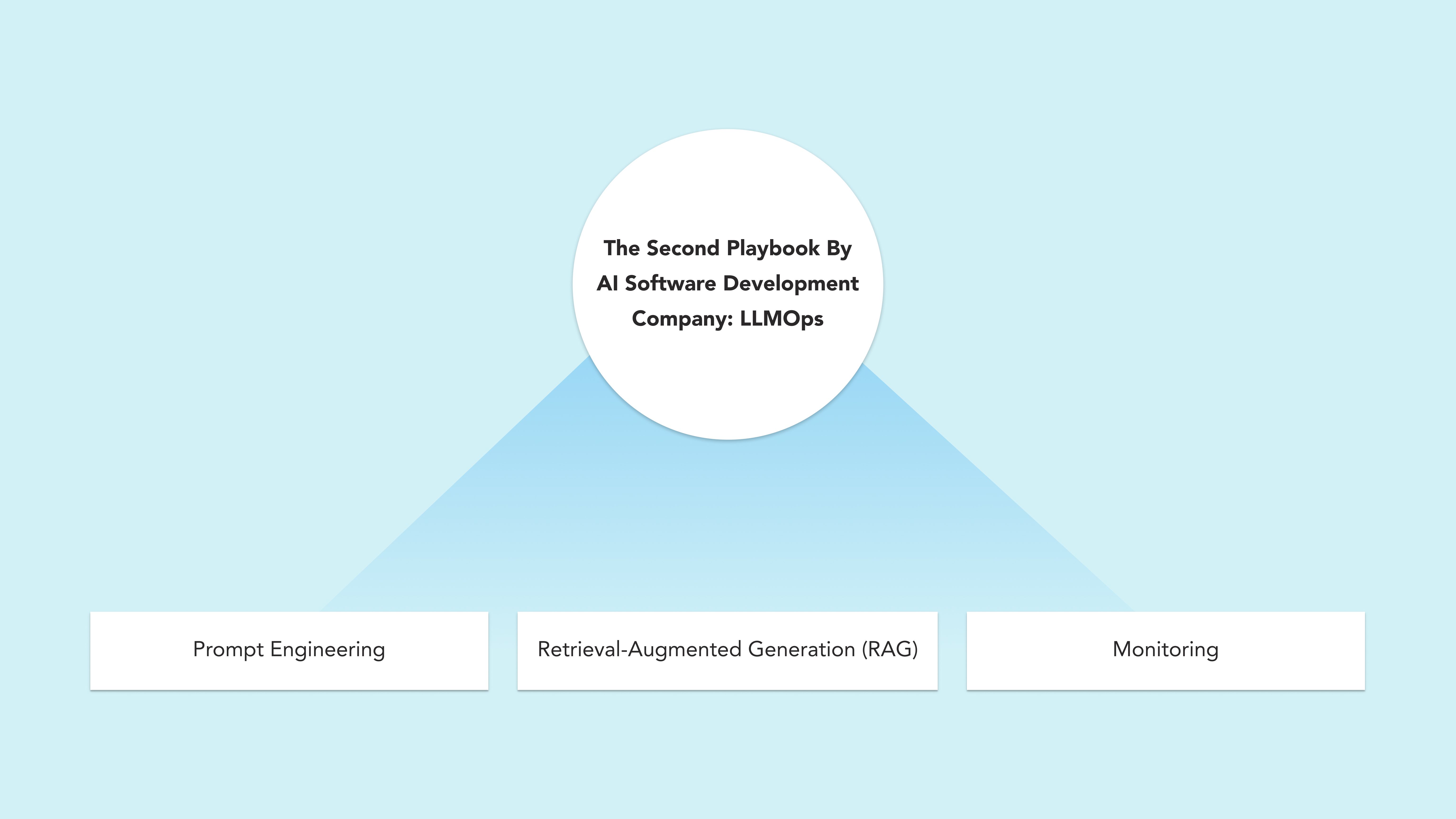In our experience with AI initiatives, as an AI software development company, we’ve observed a critical point where many promising projects falter. It’s not during the initial model creation, but in the challenging journey to production. The root cause is often a strategic miscalculation: the assumption that a single operational playbook can govern all forms of artificial intelligence.
The reality is that two distinct operational philosophies now govern the AI landscape. The first is the established and rigorous discipline of MLOps, designed for the world of predictive analytics. The second is the emerging and nuanced discipline of LLMOps, created to manage the complexities of generative AI.
Understanding the fundamental differences between these two playbooks is no longer a niche technical concern; it is a core business strategy. For any organization aiming to build a durable competitive advantage through AI, developing a differentiated approach is essential. This is central to our philosophy at Chirpn, where we function as product development partners, ensuring the operational architecture we build is precisely aligned with your business objectives.
MLOps for Predictive Certainty and Governance
MLOps, or Machine Learning Operations, is the playbook for precision and predictability. You need this framework when your business objective is to derive quantifiable answers from structured data.
"What is the projected lifetime value of this customer segment?"
or "Which components in our supply chain are at the highest risk of failure?"
The operational philosophy of MLOps is rooted in engineering strategy. Its goal is to create a repeatable, auditable, and automated pipeline for models that you build from scratch. Mature MLOps pipelines are sophisticated systems that handle everything from data validation and versioned feature stores for consistency, to a central model registry for governance, and finally, safe deployment strategies like canary releases.
A key business driver for a robust MLOps framework is defending against "model decay."
An AI model’s accuracy naturally degrades as real-world data patterns evolve. MLOps is the only effective defense, creating a virtuous cycle of continuous monitoring and automated retraining. This doesn't just preserve the initial ROI of your AI investment; it enhances it over time. This playbook is essential for embedding reliable, data-driven decisions into your core operations, especially in regulated industries where governance and auditability are necessary.
The Second Playbook by AI Software Development Company: LLMOps

LLMOps is a new playbook written for a new class of AI, according to an AI software development company. It addresses the operational challenges of managing massive, pre-trained large language models (LLMs). This is the framework you need when your business objective is creative or conversational:
"Can you build an internal search engine that understands natural language questions about our proprietary research?"
or
“How can we create a support agent that can guide a user through a complex multi-step process?"
Here, the operational philosophy shifts entirely from direct engineering to sophisticated guidance.
- Prompt Engineering becomes a central discipline, requiring a systematic approach to design, test, and manage the instructions that guide the AI’s output.
- Retrieval-Augmented Generation (RAG) A successful RAG implementation is a significant engineering challenge, requiring intelligent data pipelines to chunk and vectorize unstructured documents, and a fine-tuned retrieval system to feed the most relevant context to the LLM.
- Monitoring expands to cover a new threat landscape. We track metrics unheard of in traditional MLOps, such as "hallucination rates" for factual accuracy, potential PII (Personally Identifiable Information) leakage for data privacy, and defenses against "prompt injection" attacks to maintain application security.
LLMOps is about managing context, ensuring safety, and shaping the output of a reasoning intelligence. Its business outcomes are often transformational, unlocking innovation and creating powerful new ways for your employees and customers to interact with information.
How Do We Translate Your Business Goals into the Right AI Operation

Navigating these two complex operational models requires more than just technical skill; it demands strategic foresight. This is where we apply our philosophy of acting as a true product development partner. Our process at Chirpn begins not with a discussion about technology, but with a deep diagnostic of your business objective.
This aligns with our core belief in being "human-first, AI-backed". The "human-first" component is this strategic diagnosis; the "AI-backed" component is the flawless execution using the correct operational playbook. We recognize that a demand forecasting challenge requires the rigor of our MLOps playbook.
Conversely, when we partnered with a client to build an AI-powered job-matching platform, we identified early on that success depended entirely on a sophisticated RAG architecture to ensure high-quality, contextual matches—a classic LLMOps challenge.
This expertise in both disciplines is critical because every product we architect is designed from day one to be AI-compatible, cloud-native, and API-ready. This ensures your solution is not just effective today but is also resilient and prepared for future innovation.
The Strategic Blind Spots Your Organization Must Avoid
In our work, we often see companies stumble by falling into two strategic blind spots. The first, as discussed, is mistakenly applying the MLOps playbook to an LLM problem. The second, and equally pervasive, is a failure to adapt their data strategy.
Many organizations assume that the data infrastructure that serves their predictive models, typically clean, structured tables, is sufficient for generative AI. This is a flawed assumption, is what we would say as an AI development company. Generative AI unlocks its greatest value from your vast reserves of unstructured data: the PDFs, internal wikis, and transcripts that are often dormant. Harnessing this requires a completely different data preparation and governance pipeline. It represents a strategic shift from curating tables to creating indexed, searchable knowledge bases.
This leads to a related challenge: measuring success. For an MLOps project, your KPIs are typically quantifiable: a percentage increase in efficiency or a specific ROI. For an LLMOps project, your KPIs must be different. You should develop a blended scorecard that includes quantitative metrics like user adoption and task completion rates, alongside qualitative feedback from user satisfaction surveys to measure if the AI is genuinely helpful and intuitive.
The future will be led by organizations that move beyond simply "doing AI" and instead master the operational disciplines required to do it at scale. Building fluency in both the language of prediction and the language of generation is a significant undertaking for any business, but it is the defining characteristic of an AI-native organization and the foundation of a lasting competitive advantage.

